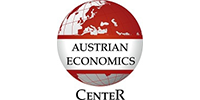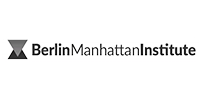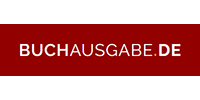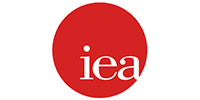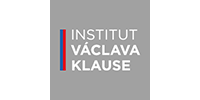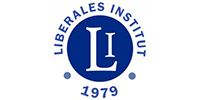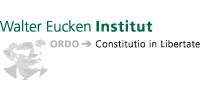When money doesn’t matter:
The economics of kidney donation
As you read this, 103,000 men, women, and children in the U.S. are waiting for a kidney. Last year alone, over 43,000 transplants were performed. Yet, 17 people die every day while waiting. In economic terms, we are witnessing a situation where demand far exceeds supply. However, it is not the free market that is to blame, but rather its absence. As the Wendover Productions YouTube channel explains, the free market is replaced by a formula, which assigns a score to every patient according to many factors, such as age, medical history, etc.
This system may seem more ethical than the free market. Yet, it has hidden costs, as we will discuss further.
Compared to other organs, finding kidneys is still a relatively easy job—everyone has two, and one is enough to live, if the donor is healthy. Still not many people are willing to be live donors: two-thirds of transplants come from deceased voluntary donors (who can give both). Speed is crucial. Although 170 million Americans are registered donors, Penn Medicine notes that only 3 in 1,000 die in conditions that allow posthumous organ donation. Moreover, U.S. patients are registered in 11 regions. This disadvantages those living in regions where fewer donors die. By contrast, patients in Florida or the Southeast—known as the “stroke belt”—have better odds. Wealthy patients are also advantaged, since the rich can more easily reach the hospital where a kidney has suddenly become available.
So how can economics and free market improve this system?
Kidneys are no trash
Economic lesson number one: don’t waste good kidneys. Columbia University nephrologist Sumit Mohan and colleagues studied how often one kidney from a deceased donor was used while the other was discarded. They found that in 8,000 cases, one kidney of a deceased person was thrown away—with only a small fraction due to one kidney being unsuitable.
Behind this waste lie perverse economic incentives. As Mohan explains, U.S. transplant centers are penalized if too many patients fail to survive at least one year post-transplant, but not when patients die on dialysis while waiting.
This inefficiency calls for reform. For example, the French system accepts organs from older donors or those with hypertension—and outcomes (i.e. mortality) are no worse than in the US. In fact, a 2013 study found survival rates in France were better than in the U.S.
Another lesson is that the government (or any other entity organizing organ donations) should always make it as easy as possible to qualify as a donor if one is willing to do so. This has already happened in some areas. In Illinois, drivers are asked about donation when renewing their license. Nobody is pressuring anybody into anything, but it is easy to sign up for organ donation. Britain also found that it often depends on how the information is presented and how you formulate your questions. Behavioral economists showed decades ago that people fear losses more than they value gains (loss-aversion). So, leaflets stressing “lives lost without donors” work better than those highlighting “lives saved.”
Last but not least, many argue that retrieval from deceased donors (as discussed above) is still far too cumbersome.
It is about money
One final question: should kidney donors be paid? Nobel laureate Gary Becker said yes. We already pay for plasma, egg donation for women, even soldiers who risk their whole life—why not kidneys? It also makes sense from the economic viewpoint: dialysis costs about $100,000 per year, while a transplant is a one-time $120,000. If the kidney works for just a year, it pays for itself.
Paying for kidneys is not economic utopia. In 1988, Iran established a legal payment system: $4,500 (about half the average annual salary) plus a year of health insurance for each donor. Within a year, waiting lists vanished and waiting times dropped to roughly 12 months.
However, the data also show three-quarters of Iranian donors sold kidneys to pay off debt. That raises potential risks—poorer donors’ organs are more prone to infection—and some could raise ethical questions like ‘Is it right to motivate the poor into selling organs?’.
The infection problem would be relatively easily solved by free market, where no profit-maximizing hospital would want to have bad kidneys in stock. They would properly check donors (or more likely this would be checked and enforced by the patient’s insurance company).
In regard to ethics, a person is the owner of his body and therefore has the right to decide about its use – whether it concerns work, donating blood, or selling a kidney. If the transaction is voluntarily and informed, then it is an exchange that brings benefit to both sides: one gains a chance at life, the other the means to improve his situation.
To conclude, it is the government who failed the patients, not the free market. Doctors (or hospitals) are funded in ways that result in people dying on dialysis, while patients and donors are not allowed to pay and accept money for voluntary and life-saving exchange. The shortage of kidneys is not a natural fact of life but the result of regulation. Unlike in most markets, potential suppliers are forbidden to respond to demand with financial incentives. Prices are fixed at zero by law, which ensures that the supply of live donors remains artificially scarce. In other words, the current system does not merely allocate organs according to need—it actively prevents the emergence of greater supply that a free market would normally generate.
While one could object to trading kidneys like apples in a shop, it is much worse to watch 17 people die every day because of a poorly designed system.
This material is a result of a new collaboration between the Institute for Research in Economic and Fiscal Issues (IREF) and the European Center for Austrian Economics Foundation (ECAEF), focused on publishing a series of articles on economic and fiscal topics. It emphasizes our commitment to independent thought, academic freedom, and critical inquiry. The original was published here: https://en.irefeurope.org/category/publications/online-articles/



